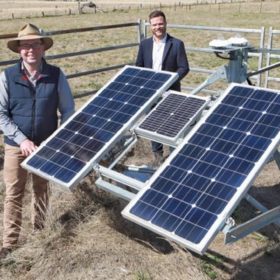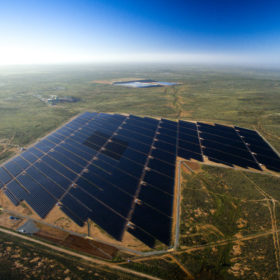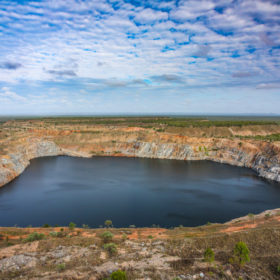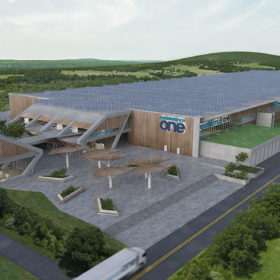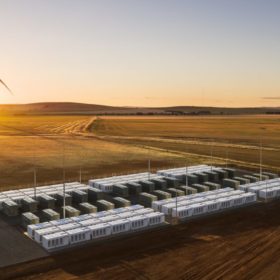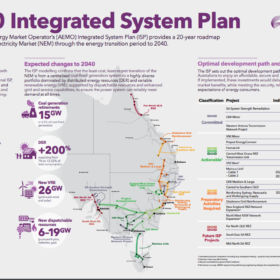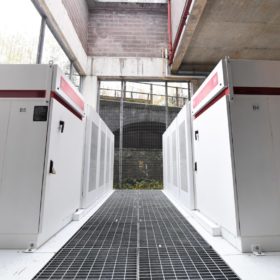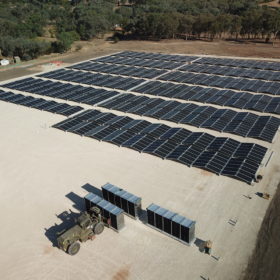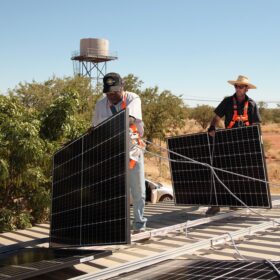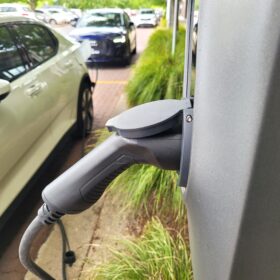“Capacity deferral is the primary source of storage value”
Big batteries derive most their value from replacing gas peaker plants and averting the installation of excessive amounts of transmission and generation infrastructure. However, batteries cannot replace all gas plants, MIT researchers found. From a holistic economics perspective, there is a certain share of storage that is considered cost-efficient. With battery costs declining, that share is constantly increasing.
Plan to deploy 1,500 MW/6,000 MWh storage project gets approval in the US
A permit to expand Vistra’s natural gas-fired Moss Landing generation station to 1,500 MW/6,000 MWh has been approved, setting the stage for the world to see gigawatt-scale battery energy storage for the first time ever.
New England big battery awarded $12.5 million state government grant
The 50 MWh battery will be colocated with stage 1 of the UPC/AC Renewables’ 720 MW New England Solar Farm.
Broken Hill to replace gas turbines with massive microgrid for back-up supply
The NSW country town of Broken Hill is set to host one of the world’s largest microgrids supplied by solar, wind and grid-scale storage.
Genex raises funding to fast-track Queensland battery project
After demand under the share placement significantly exceeded the company’s capacity, the Sydney-based developer has decided to undertake an additional share purchase plan to secure funding for the development of its 50 MW/75 MWh Como battery project in central Queensland.
$245,000+ in AMGC funding accelerates the prospects of home-grown Li-ion battery manufacturer
COVID-19 has enhanced the conviction that Australia will benefit from advanced manufacturing and sovereign supply. Homegrown battery manufacturer Energy Renaissance is poised to drive home that advantage.
Hornsdale posts big first-half revenue for Neoen, solar remains consistent despite poor conditions
Neoen’s Hornsdale Power Reserve has gone to work in the first half of 2020, virtually tripling the French renewables developer’s storage revenue on comparative 2019 levels. However, this growth was largely caused by a one-off event, and a slower Q2 highlights the need for FCAS policy renewal. Neoen’s Australian solar revenues could also achieve little more than consistency thanks to poor conditions.
AEMO’s 2020 ISP: A roadmap to the world’s fastest energy transition
If it was designed with a focus on reliability, security and the lowest cost for consumers, Australia’s main electricity grid would see periods in which nearly 90% of demand is met by renewable generation. A diverse portfolio of distributed energy resources and large-scale solar and wind generation supported mainly by pumped hydro and batteries would ensure the least-cost transition as the nation’s coal plants retire. Adequate investment in transmission infrastructure will be instrumental in making this a reality.
PG&E, Tesla start building world’s biggest battery
The 182.5 MW/730 MWh Moss Landing energy storage system could eventually be expanded to 1.1 GWh – putting it on track to overshadow Tesla’s massive Hornsdale project in Australia.
Federal government awards major project status to Sun Cable’s 10 GW solar plan
The Australian federal government is fast-tracking the world’s biggest solar and storage project in the sun-drenched Tennant Creek region that aims to power Darwin and export solar from the outback to Singapore and eventually Indonesia via a submarine transmission link.


